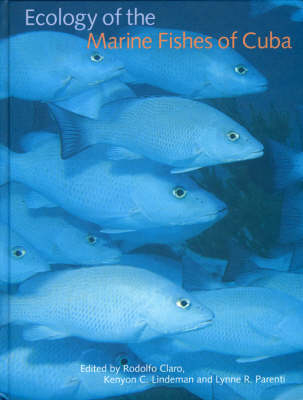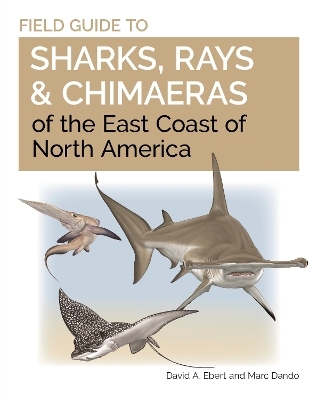
Ecology of the Marine Fishes of Cuba
Smithsonian Institution Scholarly Press (Verlag)
978-1-56098-985-1 (ISBN)
- Titel ist leider vergriffen;
keine Neuauflage - Artikel merken
Situated at the convergence of the Atlantic Ocean, the Caribbean Sea, and the Gulf of Mexico, Cuba's coastal waters are home to one of the most diverse fish faunas in the Western Hemisphere. However, until now, information in English about Cuban marine fishes and their habitats has been limited. This comprehensive guide to the region's fishes fills that void. Originally published in Spanish in 1994, Ecology of the Marine Fishes of Cuba has been completely updated and revised for this English edition. The book collects and expands on the findings of more than 20 years of work by and international team of ichthyologists and marine biologists studying the coastal fishes and habitats of Cuba. In chapters arranged topically, the thirteen contributors detail the physical characteristics of the Cuban coast; document the physiology, behavior, reproduction, feeding patterns, and growth patterns of the region's fishes; and survey Cuba's fisheries management programs. The result is an unparalleled integration of English- and Spanish-language references on coastal fishes of the western Atlantic, complete with a comprehensive bibliography that constitutes a valuable reference in its own right.
The extensive information presented here establishes an important foundation for comparisons of regional biological variations and demonstrates the need for proactive habitat and fishery management policies in the area.
Rodolfo Claro is senior investigator at the Instituto de Oceanologia de Cuba. Kenyon C. Lindeman is senior scientist at Environmental Defense in Miami, Florida. Lynne R. Parenti is curator of fishes in the Department of Systematic Biology at the Smithsonian's National Museum of Natural History.
Part 1 1. Physical Attributes of Coastal Cuba Chapter 2 1.1. Geographic Characteristics Chapter 3 1.2. Shelf Geology and Geomorphology Chapter 4 1.3. Climate Chapter 5 1.4. Hydrological Characteristics Chapter 6 1.5. Hydrochemical Characteristics Chapter 7 1.6. Hydrobiological Characteristics Chapter 8 1.7. Major Habitats Chapter 9 1.8. Anthropogenic Effects Chapter 10 1.9. Summary Part 11 2. The Marine Ichthyofauna of Cuba Chapter 12 2.1. Introduction Chapter 13 2.2. Faunal Composition Chapter 14 2.3. Distribution and Habitat Chapter 15 2.4. Changes in Population and Community Chapter 16 2.5. Additional Information on Fish Fauna Chapter 17 2.6. Summary Part 18 3. Behavior of Marine Fishes of the Cuban Shelf Chapter 19 3.1. Introduction Chapter 20 3.2. Diurnal Fishes Chapter 21 3.3. Nocturnal Fishes Chapter 22 3.4. Crepuscular Demersal Fishes Chapter 23 3.5. Behavior Mechanisms of Community Differentiation Chapter 24 3.6. Summary Part 25 4. Reproductive Patterns of Fishes of the Cuban Shelf Chapter 26 4.1. Introduction Chapter 27 4.2. Sexuality Chapter 28 4.3. Gonad Development and Spawning Patterns Chapter 29 4.4. Annual Reproductive Cycle Chapter 30 4.5. Fecundity Chapter 31 4.6. Reproductive Strategy Chapter 32 4.7. Summary Part 33 5. Trophic Biology of the Marine Fishes of Cuba Chapter 34 5.1. Introduction Chapter 35 5.2. Major Trophic Groups Chapter 36 5.3. Trophic Relationships of the Cuban Marine Fish Fauna Chapter 37 5.4. Feeding Intensity Chapter 38 5.5. Predator-Prey Size Relationships Chapter 39 5.6. Trophic Comparisons with other Habitats and Regions Chapter 40 5.7. Summary Part 41 6. Growth Patterns of Fishes of the Cuban Shelf Chapter 42 6.1. Introduction Chapter 43 6.2. Growth Mark Formation Chapter 44 6.3. Seasonal Variations in Growth Rate Chapter 45 6.4. Relationships among Different Size Measures Chapter 46 6.5. Age and Growth Rate Chapter 47 6.6. Methodological Considerations in Growth Investigations Chapter 48 6.7. Summary Part 49 7. Ecophysiology of Cuban Fishes Chapter 50 7.1. Introduction Chapter 51 7.2. Fish Fat Content Chapter 52 7.3. Seasonal Patterns of Physiological and Biochemical Indicators Chapter 53 7.4. Ontogenetic Dynamics of Physiological and Biochemical Indicators Chapter 54 7.5. Summary Part 55 8. Cuban Fisheries: Historical Trends and Current Status Chapter 56 8.1. Introduction Chapter 57 8.2. Fishery Resources of the Cuban Exclusive Economic Zone Chapter 58 8.3. Ecological Subsystems Chapter 59 8.4. Fishing Gear Chapter 60 8.5. Fisheries Infrastructure Chapter 61 8.6. Catches by Species and Region Chapter 62 8.7. Fishery Productivity Chapter 63 8.8. Use of Artificial Reefs Chapter 64 8.9. Conservation and Management Chapter 65 8.10. Summary
| Erscheint lt. Verlag | 17.2.2002 |
|---|---|
| Verlagsort | Washington |
| Sprache | englisch |
| Maße | 228 x 282 mm |
| Gewicht | 1044 g |
| Themenwelt | Naturwissenschaften ► Biologie ► Limnologie / Meeresbiologie |
| Naturwissenschaften ► Biologie ► Zoologie | |
| Technik ► Umwelttechnik / Biotechnologie | |
| ISBN-10 | 1-56098-985-8 / 1560989858 |
| ISBN-13 | 978-1-56098-985-1 / 9781560989851 |
| Zustand | Neuware |
| Informationen gemäß Produktsicherheitsverordnung (GPSR) | |
| Haben Sie eine Frage zum Produkt? |
aus dem Bereich


